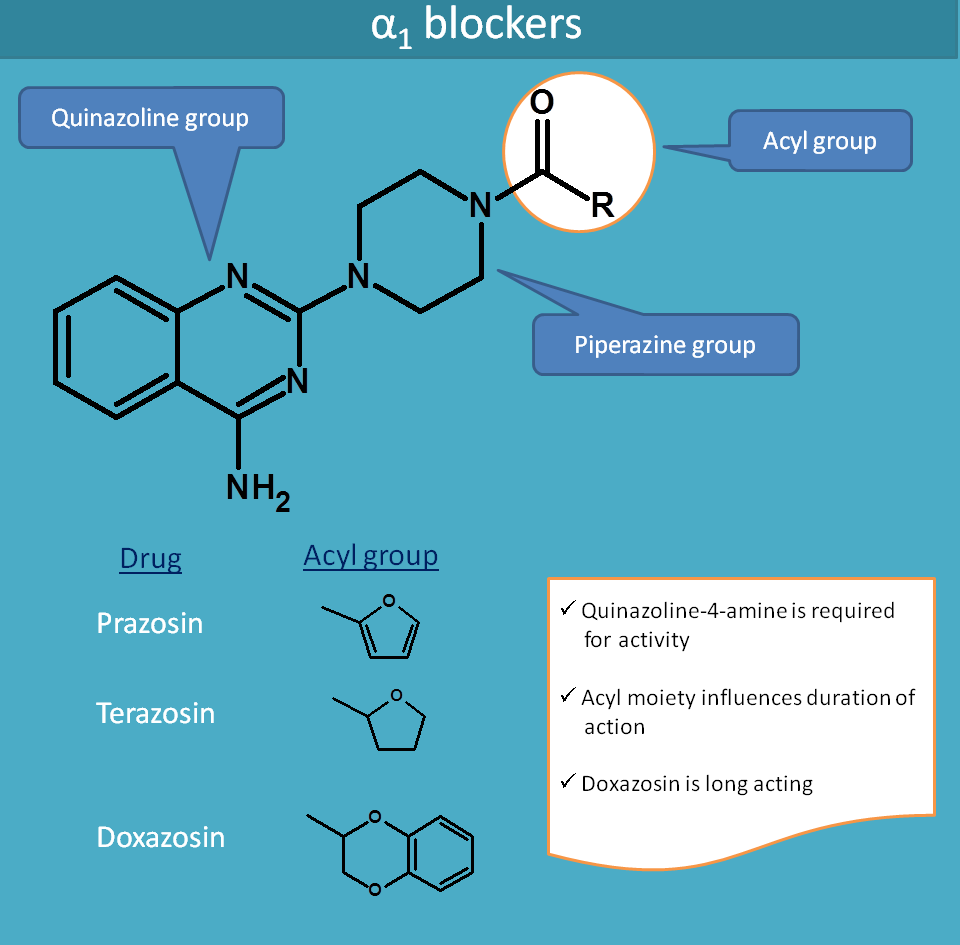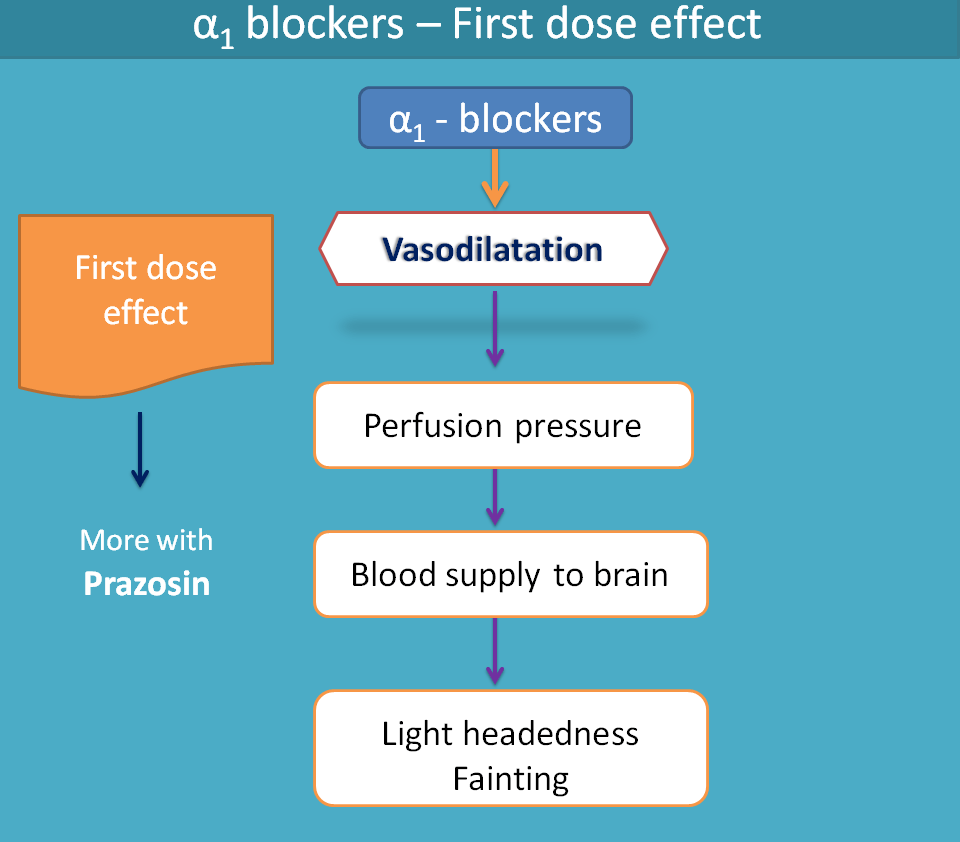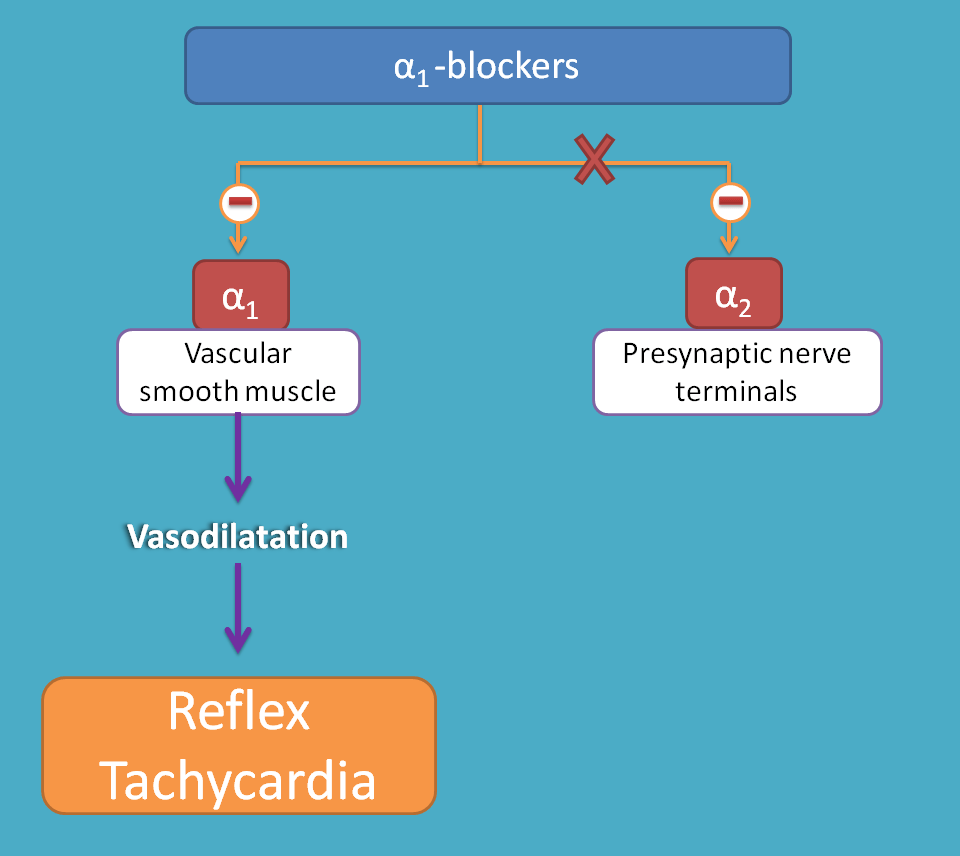Selective alpha blockers
Selective α1 blockers mainly end with suffix “-azosin” and mainly include three drugs such as prazosin, doxazosin and terazosin. Another drug alfuzosin shares suffix “-zosin”. Another drug tamsulosin is a selective α1A blocker that specifically acts on prostate tissue.
These drugs share three structural moieties as common in their structures
- Quinazoline
- Piperazine
- Acyl moiety

Among these acyl moiety determines the pharmacokinetic properties like duration of action and bioavailability. Doxazosin is long acting whereas terazosin is highly bioavailable.
How they act?
These drugs selectively block α1 receptors thereby inhibit α1 mediated activation of phospholipase C (PLC) and subsequent release of IP3 and DAG. Normally, these secondary messengers play a key role in increase intracellular calcium responsible for contraction. Since these secondary messenger are not released due to α1 block contraction is prevented resulting in relaxation.

They also decrease smooth muscle hypertrophy one of the factor important in chronic hypertension. Particularly at prostate tissue α1A receptors are present and responsible for prostate hypertrophy. This enlarged prostate tissue then compresses bladder resulting in urinary incontinence.
Side effects
- First dose effect
- Reflex tachycardia
- Headache
- Nasal congestion
- Sexual dysfunction

What is first dose effect?
Vascular smooth muscle tone is very important to maintain postural balance. Since α1blockers produce direct vasodilatation by specifically acting on α1receptors they inhibit necessary vasoconstriction required to maintain the balance of the body with change of the posture. So the patients may observe a sudden fall in blood pressure by a change in the posture resulting in light headedness and dizziness on standing. This effect is more observed with first few doses hence it is called as first dose effect.

Therefore patients who are prescribed with these drugs should be given precaution of falling within the fist few days and be advised not to participate in activities such as driving or working with machinery to avoid risk of sudden falling.
Reflex tachycardia
Just like non-selective alpha blockers, these drugs also produce reflex tachycardia but to a lesser extent. As these drugs doesn't block α2receptors they doesn't produce direct catechol induced tachycardia by central sympathetic discharge. Therefore tachycardia is produced only due to reflex action.

Other side effects
Other side effect like headache, nasal congestion and sexual dysfunction are common due to vasodilatory effects of these drugs.
Indications
These drug mainly used in the following situations.
- Severe hypertension
- Benign prostatic hypertrophy
- Congestive heart failure
Severe hypertension
α1blockers can produce a significant decrease blood pressure hence found very useful in severe hypertension. They are generally not preferred over beta blockers for maintenance of hypertension as they produce postural hypotension and reflex tachycardia. Hence their use is confined to emergency hypertension or resistant hypertension where other agents not able to control.
Benign prostatic hypertrophy (BPH)
BPH is an enlargement of prostate tissue where α1blockers proved useful by decreasing the hypertrophy of the tissue. Tamsulosin is specifically used for this purpose.
Congestive heart failure
Even these drugs don't increase direct action of catechol amines on heart by blocking α2receptors, drugs like prazosin can improve cardiac output by decreasing both preload and after load. This also decreases cardiac work improving the congestion.
Selective α2 blockers
This class of drugs are clinically not important as they act centrally to produce euphoria, hallucinations. These drugs block presynaptic adrenergic receptors thereby increase norepinephrine release within the CNS.